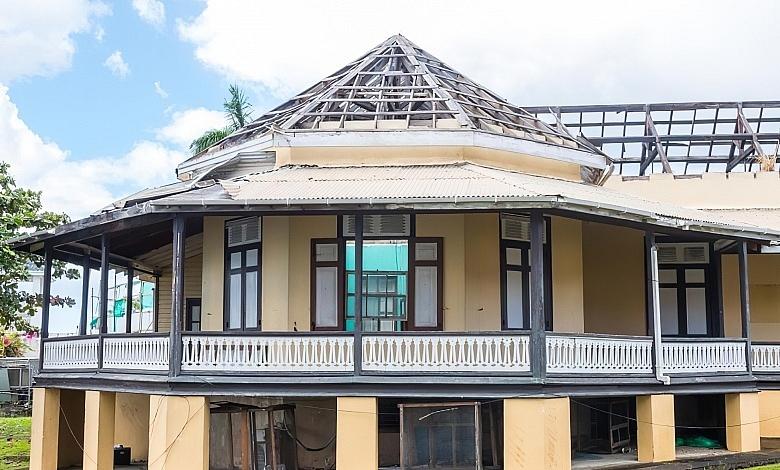Dominica’s Architecture & Historic Buildings

Dominica’s Architecture & Historic Buildings showcase the island’s diverse history, blending French and English colonial influences with indigenous Kalinago heritage. This architectural variety is most prominent in Roseau, with historic landmarks like the Roseau Public Library and the Old Market Square representing the colonial past. French influences are evident in the layout of streets and homes, while British design sensibilities can be seen in government buildings and churches.
Colonial and Post-Colonial Influences
French Creole and British designs deeply influence Dominica’s colonial architecture, particularly in Roseau. Buildings such as the Our Lady of Fair Haven Cathedral combine Gothic and Caribbean styles, reflecting adaptations to the island’s tropical climate. Another significant colonial landmark is the Melville Hall Airport, which showcases post-colonial British design. The Roseau Old Market, which once served as a colonial marketplace during slavery, remains a key historical site, connecting Dominica’s colonial heritage with its contemporary urban landscape.
Kalinago Heritage and Preservation
The Kalinago Barana Autê and structures in Salybia, Kalinago Territory, represent traditional Kalinago architecture, with thatched roofs and sustainable designs. These cultural landmarks are vital to Dominica’s Indigenous Tourism and are crucial to the island’s efforts to preserve its architectural heritage. The Society for Heritage Architectural Preservation and Enhancement (SHAPE) plays an essential role in protecting these and other important sites across the island. SHAPE and other government bodies work alongside the Division of Culture to ensure the maintenance and promotion of both colonial and indigenous structures as part of the island’s broader cultural preservation efforts.
Modern and Eco-Friendly Architecture
In recent years, Dominica has embraced sustainable architecture, with eco-friendly resorts like Secret Bay, Jungle Bay and Rosalie Bay Resort setting the standard for modern construction. These developments focus on using locally sourced materials and designing buildings that complement the island’s natural environment, supporting Dominica’s goal of Climate Resilience.
Dominica’s architectural evolution—from indigenous beginnings to colonial structures and modern eco-friendly designs—highlights the island’s cultural heritage and commitment to sustainable development. Organizations like SHAPE and government initiatives are crucial in maintaining this heritage for future generations.




